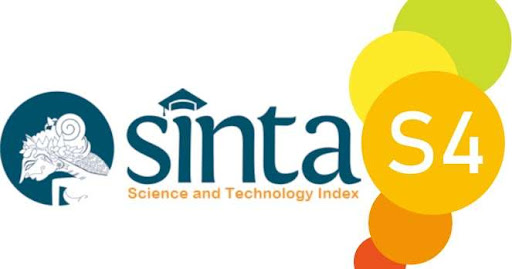Decoding The Hidden Semiotic Meaning of the Pepsi Advertisement Logo
DOI:
https://doi.org/10.36733/sphota.v17i1.9884Keywords:
Pepsi, symbolism, visual communication, semiotic analysis, consumer perceptionAbstract
The representamen of Pepsi advertisements' logo comprises a circular shape in red, blue, and white, adorned with curved lines. Nevertheless, the interpretant derived from this logo is not always transparent or consistent, owing to the diverse perspectives, experiences, cultures, and contexts of individuals. Hence, this study investigated the semiotic meaning encapsulated within the Pepsi logo from a cultural standpoint. This study employed a qualitative interpretative approach to grasp the significance and contextual implications embedded within these visuals. Pepsi’s logos from different decades were observed, including the use of colour, shapes, and selections of words. The data were analysed using Peirce's semiotic theory. The findings revealed that the form, function, and meaning of the Pepsi logo were decoded through ten distinct types of sign vehicles, their objects, and interpretants. However, a majority of these interpretations were culturally conventional. The choice of vertical or horizontal arrangement of the PEPSI typography, colors, and lines was interpreted as representative of a cultural system encompassing both individualism and collectivism. Although there seems to be a lack of an iconic relationship with the represented object and an imbalance between consistent representamen and varied interpretants, the semiotic analysis research conducted on the Pepsi logo holds positive implications for the advancement of linguistics and effective marketing strategies.
References
Anglin-Jaffe, H. (2011). Sign, Play and Disruption: Derridean Theory and Sign Language. Culture, Theory and Critique, 52(1), 29–44. https://doi.org/10.1080/14735784.2011.621665
Badara, A. (2014). Analisis wacana: Teori, metode, dan penerapannya pada wacana media. Prenada Media.
Bedford, G. S. (2011). Re-visioning the semantic and semiotic registers in the study of culture and religion. University of Denver.
Berger, A. A. (2018). Media and communication research methods: An introduction to qualitative and quantitative approaches. Sage Publications.
Chandler, D. (2007). Semiotics: The Basics 2nd edition Routledge. In New York.
Creswell, J. W., & Creswell, J. D. (2017). Research design: Qualitative, quantitative, and mixed methods approaches. Sage publications.
Cunningham, D. J. (1992). Beyond educational psychology: Steps toward an educational semiotic. Educational Psychology Review, 4(2), 165–194. https://doi.org/10.1007/BF01322343
Dalamu, T. (2023). Colour grammatical effects on advertising nuances: A social semiotic analysis. Available at SSRN 4426672. https://doi.org/10.2139/ssrn.4426672
De Saussure, F. (2011). Course in general linguistics. Columbia University Press.
Derrida, J. (1970). Structure, sign, and play in the discourse of the human sciences. MA ENGLISH, 51.
Emodi, L. N. (2011). A semantic analysis of the language of advertising. African Research Review, 5(4). https://doi.org/10.4314/afrrev.v5i4.69286
Fill, C., & Turnbull, S. L. (2016). Marketing communications: brands, experiences and participation. Pearson.
Gudykunst, W. B., Matsumoto, Y., Ting-Toomey, S., Nishida, T., Kim, K., & Heyman, S. (1996). The Influence of Cultural Individualism-Collectivism, Self Construals, and Individual Values on Communication Styles Across Cultures. Human Communication Research, 22(4), 510–543. https://doi.org/10.1111/j.1468-2958.1996.tb00377.x
Hadi, A. (2013). A critical appraisal of Grice’s Cooperative Principle. Open Journal of Modern Linguistics, 3(1), 69–72. https://doi.org/10.4236/ojml.2013.31008
Keller, K. L. (2013). Brand equity and integrated communication. In Integrated Communication (pp. 113–142). Psychology Press.
Kotler, P. (2017). Customer value management. Journal of Creating Value, 3(2), 170–172.
Lee, J. E., Hur, S., & Watkins, B. (2018). Visual communication of luxury fashion brands on social media: effects of visual complexity and brand familiarity. Journal of Brand Management, 25(5), 449–462. https://doi.org/10.1057/s41262-018-0092-6
Lu, Y. L. (2014). Literacy, culture, content: The semiotic triad breaks cultural bounds for diversity and equity. Journal of Foreign Languages, Cultures and Civilizations. Vol, 2(1), 1–19.
Mohamadi, K., & Weisi, H. (2023). Semiotic manipulation strategies employed in Iranian printed advertisements. Pragmatics and Society, 14(1), 70–89. https://doi.org/10.1075/ps.20005.moh
Oyserman, D., & Lee, S. W. S. (2008). Does culture influence what and how we think? Effects of priming individualism and collectivism. In Psychological Bulletin (Vol. 134, pp. 311–342). American Psychological Association. https://doi.org/10.1037/0033-2909.134.2.311
Passini, S. (2013). A binge-consuming culture: The effect of consumerism on social interactions in western societies. Culture & Psychology, 19(3), 369–390. https://doi.org/10.1177/1354067X13489317
Peirce, C. S. (1991). Peirce on signs: Writings on semiotic. UNC Press Books.
Rastall, P. (2013). Small model languages as tools for reflection. Language Under Discussion, 1(1), 1–23. https://doi.org/10.31885/lud.1.1.248
Ratna, N. K. (2016). Metodologi Penelitian: Kajian Budaya dan Ilmu Sosial Humaniora Pada Umumnya (cetakan II). Yogyakarta: Pustaka Pelajar.
Saputra, G. B. R., & Santoso, E. (2021). Adult humour in advertisement: a semiotic study of don’t aviation and mint video. Jurnal Komunikasi Profesional, 5(5), 414–430. https://doi.org/10.25139/jkp.v5i5.3913
Short, T. L. (2007). Peirce’s theory of signs. Cambridge University Press.
Sibarani, R. (2015). Pendekatan antropolinguistik terhadap kajian tradisi lisan. RETORIKA: Jurnal Ilmu Bahasa, 1(1), 1–17. https://doi.org/10.22225/jr.1.1.9.1-17
Tjosvold, D., Law, K. S., & Sun, H. F. (2003). Collectivistic and Individualistic Values: Their Effects on Group Dynamics and Productivity in China. Group Decision and Negotiation, 12(3), 243–263. https://doi.org/10.1023/A:1023383200180
Van Leeuwen, T., & Kress, G. (2011). Discourse semiotics. Discourse Studies: A Multidisciplinary Introduction, 2, 107–125.
Yan, S., & Ming, F. (2015). Reinterpreting some key concepts in Barthes theory. Journal of Media and Communication Studies, 7(3), 59–66. https://doi.org/10.5897/JMCS2014.0412
Yule, G. (2013). Referential communication tasks. Routledge.













